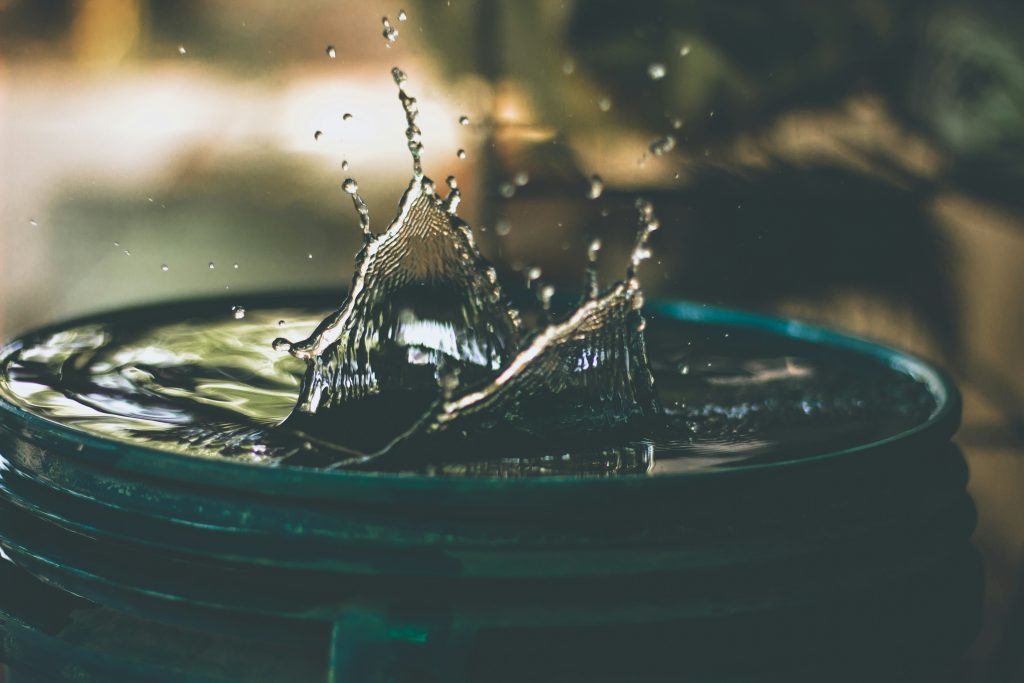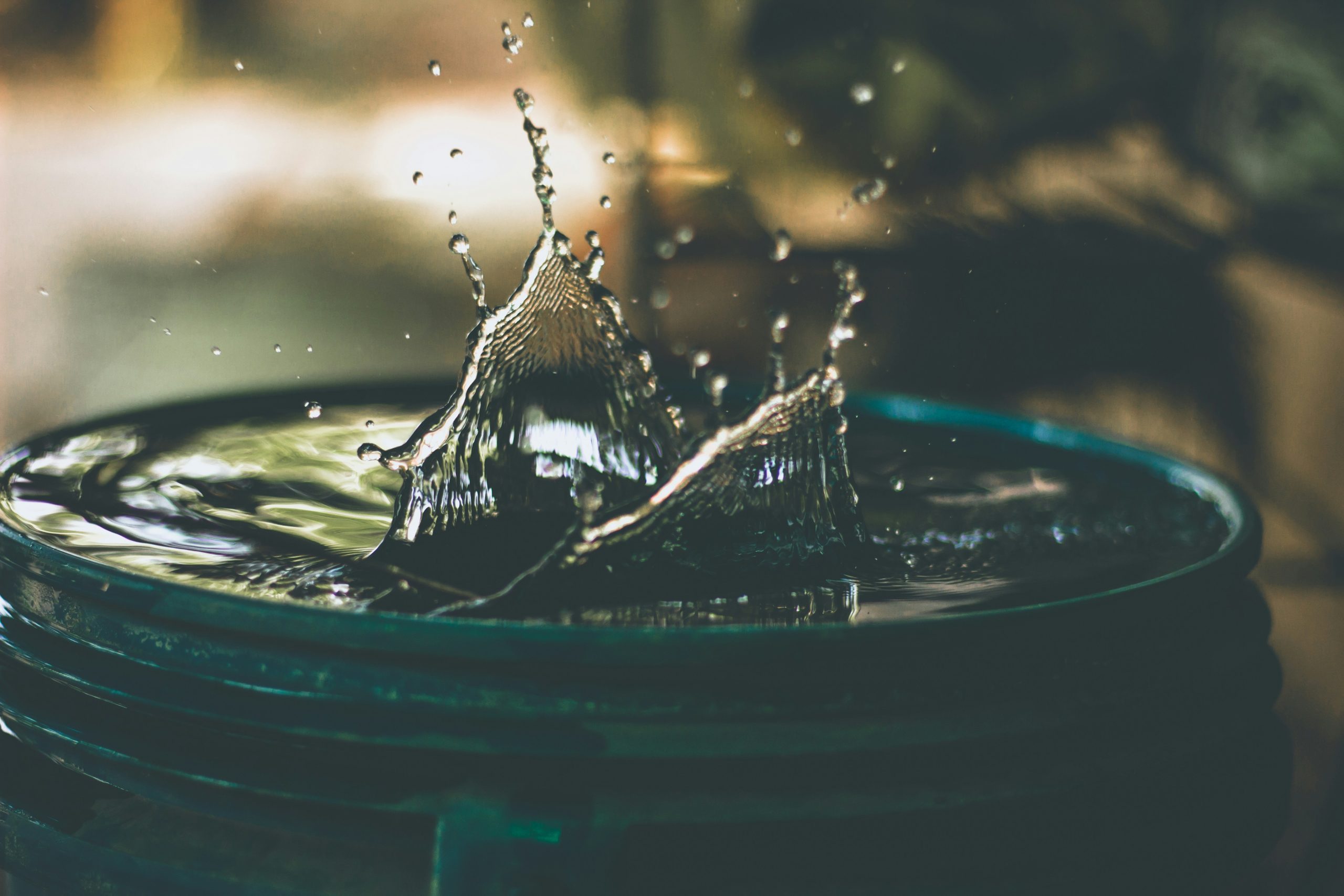Imagine stepping into the shower, anticipating a rejuvenating cascade of warm water cascading over your body. But instead, you’re met with an underwhelming, lather-resistant flow that leaves you feeling less refreshed and more frustrated. If this scenario sounds all too familiar, it might be a sign that your water softener is on its last legs. In this article, we’ll explore the telltale signs that indicate it’s time to bid farewell to your old water softener and welcome a new one into your home.
Visible Signs of Wear and Tear
Cracks or damage to the tank
If you notice any cracks or visible damage on the tank of your water softener, it may be a clear sign that it’s time for a replacement. Cracks can lead to leaks and malfunctions, compromising the overall effectiveness of the system. Damaged tanks can also be a safety hazard, so it’s important to address this issue promptly.
Leaking or dripping
Leaking or dripping from your water softener is another visible sign that it may be time for a new one. These leaks can indicate internal damage or malfunctioning components. Not only can leaks waste water and potentially damage your property, but they can also lead to decreased water quality and efficiency. It’s important to address leaks as soon as possible to avoid further complications.
Calcium buildup on fixtures
If you notice a significant amount of calcium buildup on your fixtures, it could be a sign that your water softener is not performing optimally. One of the main purposes of a water softener is to remove minerals that cause hardness, such as calcium and magnesium. If your fixtures are accumulating excessive amounts of these minerals, it may be time to upgrade your water softener to ensure that it is effectively removing them.
Decreased Water Quality
Foul odor
A foul odor coming from your water can be an indication that your water softener is no longer effectively removing impurities. When a water softener reaches the end of its lifespan, it may not eliminate odors caused by sulfur, bacteria, or other contaminants. If you’ve noticed a strong, unpleasant smell in your water, it’s a good idea to consider replacing your water softener to improve water quality and eliminate the odor.
Cloudy or discolored water
Cloudy or discolored water is another obvious sign of decreased water quality. Over time, a water softener can become less efficient at removing sediment and particles from your water, leading to undesirable discoloration or cloudiness. If you’re consistently experiencing this issue, it may be time to invest in a new water softener that can effectively clarify your water and improve its appearance.
Increased soap usage
If you find yourself using more soap or detergent than usual to achieve the same level of lather, it could be a sign that your water softener is no longer functioning properly. Hard water requires more soap to create suds, as minerals in the water interfere with the effectiveness of soap. If you’ve noticed an increase in soap usage that is not due to other factors, it may be time to replace your water softener to restore the efficiency of your cleaning routine.

Lack of Efficiency
Noticeable decrease in water pressure
A noticeable decrease in water pressure throughout your home can be a clear indication that your water softener is not performing as it should. Over time, mineral deposits can build up within the system, reducing the flow of water and causing a decrease in pressure. If you’ve had persistent low water pressure and have ruled out other potential causes, it’s worth considering a new water softener to restore optimal water flow throughout your home.
Longer regeneration cycles
Water softeners typically go through a regeneration cycle to clean the resin beads and flush out accumulated minerals. If you’ve noticed that your water softener’s regeneration cycles have become longer, it could be a sign of decreased efficiency. Longer cycles can indicate that the resin beads or other components have become clogged or worn out, affecting the overall performance of the system. It may be time to upgrade to a new water softener that can undergo efficient regeneration cycles.
Inefficient use of salt
Water softeners use salt to regenerate the resin beads and maintain their effectiveness. If you’ve noticed that your water softener is using salt at a significantly faster rate than before, it could be an indication of an efficiency problem. Inefficient salt usage may indicate that the resin beads are not effectively removing hardness minerals, resulting in the need for more frequent regeneration. Upgrading to a more efficient water softener can help optimize salt usage and reduce maintenance costs.
Continuous Repairs and Maintenance
Frequent breakdowns
If your water softener is constantly experiencing breakdowns and requiring repairs, it may be a sign that it’s nearing the end of its lifespan. As water softeners age, their components can become worn out or damaged, leading to frequent malfunctions. Constantly having to call for repairs can be costly and time-consuming. Investing in a new water softener could save you money in the long run by eliminating the need for ongoing repairs.
Costly repairs
In addition to frequent breakdowns, the cost of repairs for an aging water softener can quickly add up. As time goes on, finding replacement parts for older models can become increasingly difficult and expensive. If you find yourself frequently facing high repair bills, it may be more cost-effective to invest in a new water softener that comes with a warranty and modern, readily-available parts.
Difficulty finding replacement parts
As water softeners age, it can become challenging to find replacement parts, especially for models that have been discontinued or use outdated technology. This can lead to longer repair times, increased costs, and frustrations when trying to maintain an older water softener. If you’re having trouble sourcing replacement parts for your water softener, it may be a sign that it’s time for an upgrade to a newer model with better accessibility to parts.

Age of the Water Softener
Over 10 years old
While the lifespan of a water softener can vary depending on usage and maintenance, a rough guideline is that if your water softener is over 10 years old, it may be time to consider a replacement. Older models may not operate as efficiently or effectively as newer ones and could potentially be causing other issues within your plumbing system. Newer water softeners often come with improved technology and features that can provide better performance and ease of use.
Outdated technology
Water softener technology has advanced significantly over the years, introducing features and capabilities that older models may not possess. Outdated technology can lead to decreased efficiency, increased maintenance requirements, and limited functionality. If your water softener lacks features such as automatic backwashing, salt-saving options, or advanced control systems, it may be worth considering upgrading to a newer model that can better meet your needs.
Manufacturer’s recommendation
Manufacturers typically provide recommendations regarding the lifespan and replacement timeframe for their water softener models. If your water softener manufacturer suggests replacing the unit after a certain number of years, it is wise to heed their advice. They have the expertise and knowledge of their product’s capabilities and limitations. Following the manufacturer’s recommendation can help ensure optimal performance and longevity of your water softener system.
Changes in Water Hardness
Increased scale buildup
One of the primary purposes of a water softener is to reduce scale buildup caused by hard water. If you’ve noticed an increase in scale on your fixtures, appliances, or plumbing system, it may indicate that your water softener is no longer effectively removing hardness minerals. Scale buildup can wreak havoc on your plumbing, leading to clogs, reduced water flow, and damage to appliances. Upgrading your water softener can help prevent these issues and prolong the lifespan of your plumbing system.
Hard water spots on dishes and glassware
Hard water is notorious for leaving spots and streaks on dishes and glassware, even after thorough washing. If you’re consistently dealing with unsightly spots and film on your dishes, it may be a sign that your water softener is no longer effectively removing the mineral content responsible for these spots. Upgrading to a more efficient water softener can ensure spotless, sparkling dishes and glassware.
Testing indicates high levels of hardness
If you’ve conducted a water hardness test and the results indicate high levels of hardness, it’s a clear indication that your water softener is no longer adequately treating your water. Excessive hardness can lead to a multitude of issues, including scale buildup, reduced efficiency of appliances, and dry skin and hair. Installing a new water softener can help address these problems and improve the overall quality of your water.

Inconsistent Performance
Unevenly softened water
Inconsistent water softening is a common issue with aging water softeners. You may find that some parts of your home receive adequately softened water, while other areas still experience the negative effects of hard water. This inconsistency can be frustrating and is a clear sign that your water softener is no longer performing consistently. Upgrading to a new water softener can ensure uniform water softening throughout your entire home.
Inconsistent regeneration cycles
Proper regeneration cycles are essential for the effective operation of a water softener. If you notice that your water softener’s regeneration cycles have become irregular or sporadic, it may indicate a problem with the system. Inconsistent regeneration cycles can result in inadequate removal of hardness minerals, leading to compromised water quality. Investing in a new water softener can help restore regular and reliable regeneration cycles, ensuring consistent performance.
Fluctuating water hardness levels
Water hardness levels should remain consistent after passing through a water softener. If you find that your water hardness levels vary significantly, it may indicate that your water softener is no longer functioning properly. Fluctuating hardness can have detrimental effects on your plumbing, appliances, and overall water quality. Upgrading to a new water softener can help stabilize water hardness levels and prevent potential damages caused by inconsistent performance.
Inadequate Size or Capacity
Insufficient water softening for household needs
If you constantly find yourself running out of softened water or notice that your water softener struggles to keep up with your household’s demand, it could signify that your current system is undersized. An undersized water softener may not have the capacity to handle the volume of water your household requires, resulting in inadequate water softening. Upgrading to a larger-sized water softener can ensure that you always have a sufficient supply of softened water available.
Constantly running out of softened water
Running out of softened water frequently is a sure sign that your current water softener is not meeting your needs. If you consistently need to wait for the system to regenerate or find that you are frequently using hard water, it’s time to consider a larger or more efficient water softener. Upgrading to a system with greater capacity can provide an uninterrupted supply of softened water and eliminate the inconvenience of running out.
Inability to keep up with demand
An inability to keep up with the demand for softened water in your household can indicate that your water softener is undersized or is no longer efficient enough. If you’ve noticed that the system struggles to work efficiently during peak usage times or when multiple water sources are being used simultaneously, it’s time to upgrade to a larger or more capable water softener. This will ensure that your household’s demand for softened water is consistently met.

Upgrade Opportunities
Newer models with advanced features
Advancements in water softener technology have introduced new features that can improve performance and user experience. Newer models may include features like automatic regeneration based on water usage, diagnostic systems for troubleshooting, and customizable settings for water hardness levels. Upgrading to a water softener with advanced features can enhance the effectiveness and convenience of your water softening system.
Energy-efficient options
Energy-efficient water softeners are designed to minimize energy consumption by utilizing more efficient regeneration processes and reducing salt and water waste. Upgrading to an energy-efficient model can not only help conserve resources but also save you money on your utility bills in the long run. These eco-friendly options are beneficial for both the environment and your pocketbook.
Smart technology integration
Water softeners now have the ability to integrate with smart home systems, allowing you to monitor and control the system remotely through your smartphone or other connected devices. This level of convenience can provide real-time information about salt levels, regeneration cycles, water usage, and even alert you of any potential issues. If you’re interested in having more control and access to your water softener system, upgrading to a model with smart technology integration can be a great option.
Professional Assessment
Consultation with a water treatment specialist
If you’re unsure about the condition of your water softener or whether it’s time for a replacement, consulting with a water treatment specialist can provide valuable insights. These professionals have the knowledge and expertise to evaluate your current system, assess your water quality needs, and recommend the most suitable course of action. A consultation with a water treatment specialist can help you make an informed decision about upgrading your water softener.
Water softener evaluation
Having your water softener professionally evaluated can give you a clear understanding of its current condition, potential issues, and expected lifespan. A water softener evaluation can include inspecting the system’s components, checking for leaks or damage, testing water hardness levels, and evaluating the efficiency of the system. This comprehensive assessment can provide you with the information you need to determine if it’s time to replace your water softener.
Expert opinion
Seeking an expert opinion from a water treatment professional can be invaluable when deciding whether to upgrade your water softener. These professionals have experience working with various water softener models and can provide recommendations based on your specific needs and budget. Their expertise can help you navigate the wide range of options available and guide you towards choosing the right water softener for your home.
In conclusion, knowing when it’s time for a new water softener involves paying attention to visible signs of wear and tear, changes in water quality, decreased efficiency, continuous repairs and maintenance, the age of the water softener, changes in water hardness, inconsistent performance, inadequate size or capacity, upgrade opportunities, and seeking a professional assessment. By recognizing these indicators, you can make an informed decision about when to replace your water softener and ensure that your home’s water is consistently softened and of high quality.



